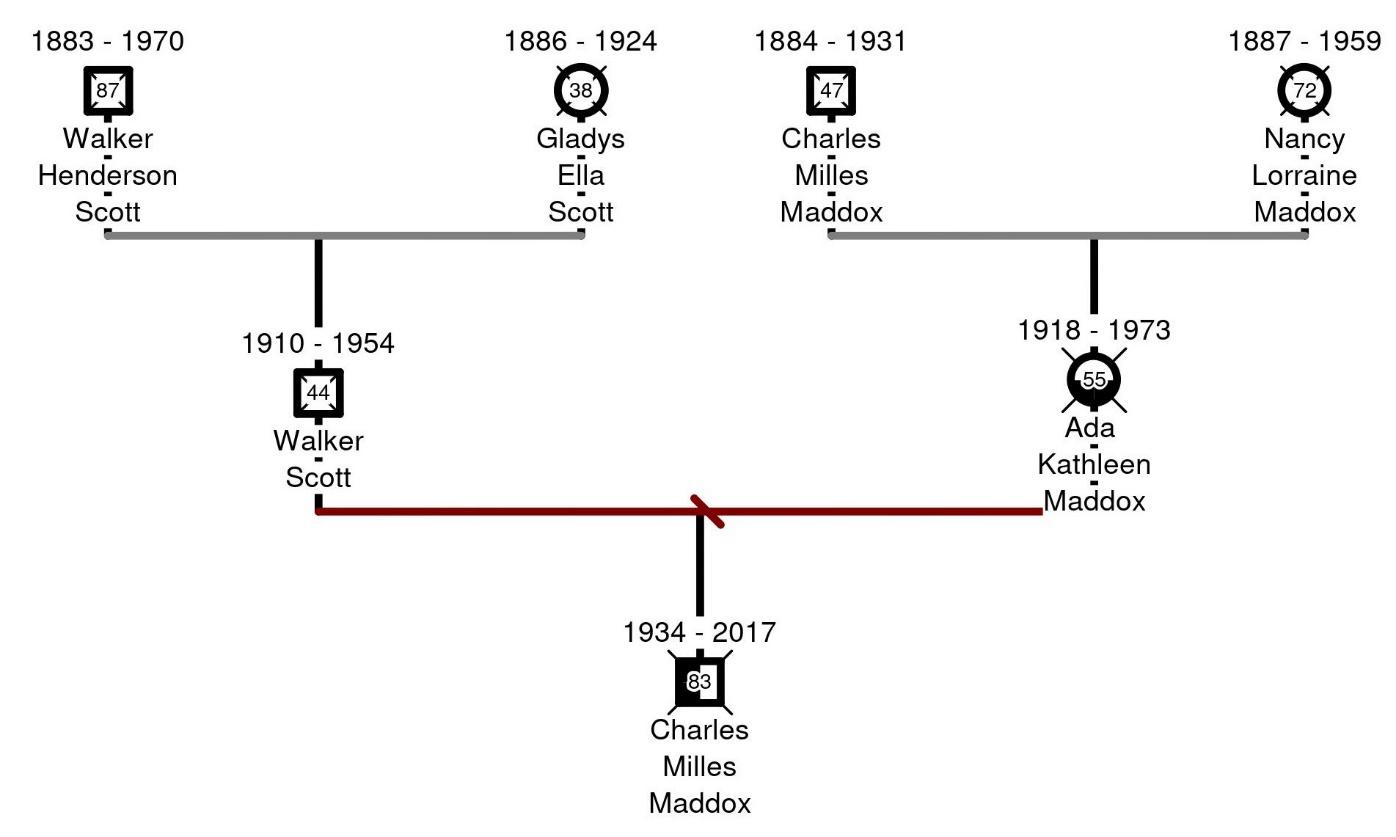Charles Manson: The Serial Killer

Written Background
Charles Milles Maddox, more infamously known as Charles Manson, the founder of the murderous cult “The Family,” was born on November 12, 1934. Little Charles never saw his swindler of a father since Walker Scott disappeared right after Kathleen, Charles’ mother, told him about her pregnancy. Walker only gave his girlfriend and his illegitimate son a meager $5 monthly child support payment (WikiTree, 2019). Even Charles’ last name came from his mother’s second husband (WikiTree, 2021). Kathleen was not a responsible mother— she was known for heavy drinking and once tried to sell little Charles to a waitress in a local bar for a pitcher of beer (Rosenberg, 2019). As Manson remembered, Kathleen’s parents loved her but, at the same time, annoyed her with a strict upbringing based on their religious beliefs and conservative lifestyle (WikiTree, 2021). Kathleen frequently left Charles alone for days or weeks, forcing him to engage in petty crime in order to survive.
Eventually, teenage delinquency and tough life on the streets turned Manson into a seasoned criminal. He committed car theft, burglary, pimping, and fraud, becoming inseparable from crime (Rosenberg, 2019). From the clear recidivist pattern, it is evident that Manson had little to no remorse and did not want to change. In this regard, he developed sociopathic tendencies, which likely stemmed from Manson’s poor socialization. He never learned how to live in society and never saw positive examples. Instead, streets, jails, and prisons taught Manson to be manipulative, charming, and cunning. He portrayed himself as a prophet, a new Messiah who would help Black people win the race war and teach them how to rule the world (Biography, 2018). Manson used sociopathic disorder to his advantage, forming a cult of loyal young men and women, ready to kill on his command to instigate the desired race war. However, Manson Family’s failed to achieve its delusional goals, and Manson himself was sentenced to life in prison.
Literature Review
The sources used for this assignment can be divided into two groups. The biggest group is the biographic sources used to reveal important facts and details that contributed to Charles Manson’s transformation into an infamous monster. In particular, the biographic sources demonstrated how Manson’s life was crippled from early childhood, as his father left the family before Charles’s birth, and his mother was a delinquent teenager (WikiTree, 2019; 2021). The biographic sources show how Manson descended into a life of crime, becoming inseparable from his sociopathic tendencies (Rosenberg, 2019; Biography, 2018). In this regard, one can see how negative family and peer influence may turn individuals into monsters, distorting their perceptions of morality and acceptable behaviors.
The second source type made it possible to determine negative developments in Manson’s psychological profile. From the definitions provided by Mokros et al. (2020), it became evident that Charles Manson was a sociopath who could not learn from experience as he committed crime after crime. Manson was not a psychopath — in a twisted way, he cared about his Family, as he wanted to establish its dominance in the post-race war world. While Manson’s crimes cannot be justified or forgiven, the motivation behind his actions has become clearer.
Group Member’s Reflection
I enjoyed working on this project since its design allowed substantial freedom in topic selection. In particular, the project allowed me to revisit the subject of evil, the root causes that may turn an ordinary individual into a horrible monster. Research on Charles Manson’s biography reinforced my belief that nobody is born evil. In Manson’s case, everything was set against him — he was abandoned and neglected by everyone, including his mother and father, and forced to do whatever it took to survive. Society did not care about Manson, so he eventually tried to get his revenge by gathering a group of other outcasts and plotting to destroy it. In my opinion, Manson’s example shows how our indifference and complacency may lead to terrible consequences, forcing desperate individuals to slide down the slippery slope.
References
Biography. (2018). Charles Manson (1934-2017).
Mokros, A., Hare, R. D., Neumann, C. S., & Habermeyer, E. (2020). Subtypes and variations of psychopathic disorders. In A.R. Felthous & H. Saß (Eds.), The Wiley international handbook on psychopathic disorders and the law (2nd ed, pp. 107–143). Wiley.
Rosenberg, J. (2019). Biography of Charles Manson, cult leader and mass murderer.
WikiTree. (2019). Colonel Walker Scott (1910 – 1954).
WikiTree. (2021). Ada Kathleen (Maddox) Bower (1918 – 1973).
